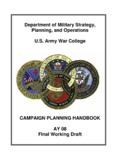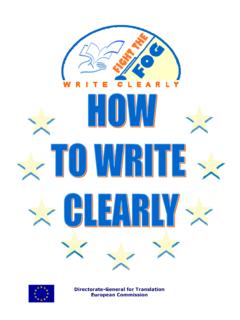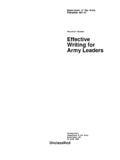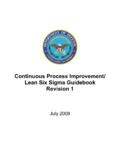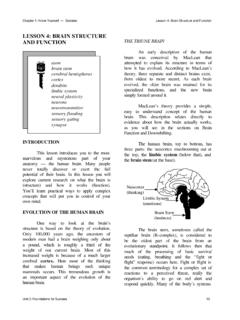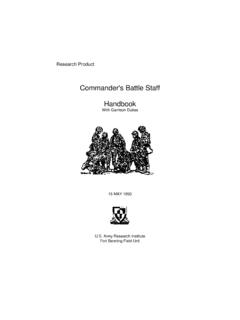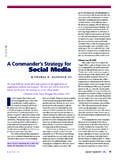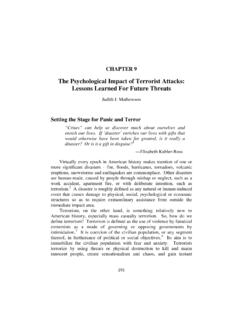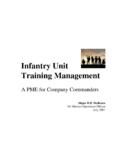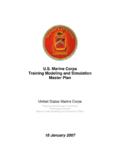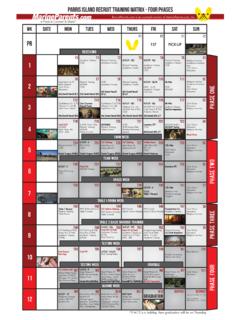Transcription of Command and Staff College Written and Oral …
1 Command and Staff College Written and Oral Communications Guide i Table of Contents Introduction .. 1. Chapter I - WRITING ASSIGNMENTS AND HOW TO DO THEM .. 4. The Hourglass Model .. 4. How to Write a Good Paper by Dr. Brad Meyer, SAW .. 7. Writing the Analytical Paper .. 9. Writing the Strategic Level of War Course 10. Writing a Point Paper .. 11. Writing the Joint Campaign 13. Writing the Amphibious Paper .. 14. Writing the MOOTW Paper .. 16. Chapter II - THE MMS PAPER. What the MMS Paper is and is 17. Archives, Libraries, and Source Materials .. 26. Annotated List of Web 32. Writing the Review of the 33. Writing the First Draft .. 37. Preparing an 38. The MMS Process .. 40. Revising Drafts and Working with 41. Writing the Executive Summary .. 44. Format for the Executive 46. Completing the Defense Technical Information Center (DTIC) Report Documentation Form 47. Chapter III - AFTER YOU'RE FINISHED. Awards and Publication Opportunities: "The Few, the Proud, the Published".
2 50. Revising for Publication: "A Few Good Words" .. 56. Chapter IV - BRIEFING AT THE Command AND Staff College . ii Introducing a Guest 61. Giving a Briefing .. 61. The Mechanics of 63. Eight Basic Principles of a Successful 64. Final Advice on Briefing .. 69. Chapter V - THE RESEARCH TEMPLATE (MMS PAPERS ONLY). Advantages of the Template .. 71. Text of the Research 78. Appendix A -- Military Publications .. 101. Appendix B -- Non-Governmental Sources of 152. Appendix C --Web Sites of Interest .. 166. Appendix D -- Musket and Quill by Col Lloyd Matthews, 173. iii INTRODUCTION: THE Written AND ORAL COMMUNICATIONS PROGRAM. Field grade officers need to communicate clearly and persuasively on paper and in speech. By the time officers reach the rank of major or lieutenant-commander, they begin to spend increasing time briefing superiors and developing a variety of Written products. The abilities needed to succeed in both forms of communication do not develop spontaneously.
3 Officers learn the effective techniques to communicate by speech and in writing and develop those skills through use. Many students at the Command and Staff College attend the English Refresher Course, but all write a series of papers throughout the year. Likewise, Command and Staff College students give a series of briefings during the year, culminating in a simulated interview during media training. This publication deals primarily with Written communications. Students at the Command and Staff College write at least six papers annually, one each in Theory &. Nature, Strategic Level of War, Operational Level of War, Warfighting, Military Operations Other Than War, and Art of Command . Most electives require another paper. Chapter One provides guidance to writing papers of any length: the "Hourglass Model.". This chapter also prints an essay by Dr. Brad Meyer of the School of Advanced Warfighting (SAW) on how to write a successful paper.
4 Although his essay is oriented towards SAW's requirements, it applies equally well to the various Command and Staff College writing assignments. Those pursuing the Masters of Military Studies (MMS) degree write the MMS paper itself, a minimum of thirty pages of text, plus documentation of sources. Although much of this publication concerns the MMS paper, its advice also applies to the campaign study done in the Operational Level of War, the MOOTW paper, and papers Written in electives. For detailed questions of style, format, and documentation, consult The Style Guide: Research and Writing at the Joint Military Intelligence College . Every student should have a copy of this publication. The Style Guide follows the general approach of The Chicago Manual of Style. That standard publication may be familiar to many in the well known book by Kate Turabian, A Manual for Writers of Term Papers, Theses, and Dissertations (many editions). The Command and Staff College prefers the use of footnotes (reference notes at the bottom of the page) instead of endnotes (reference notes all grouped at the end of the paper), but endnotes are acceptable.
5 1. Chapter One also provides guidance for each of the papers Written in courses throughout the year. This guidance has been coordinated with the appropriate course directors and the Dean of Academics. These words of guidance are suggestive, not prescriptive. That is, the guidance offered suggests how students may answer the assignments. It does not attempt to prescribe how to write the assignment. Naturally, students should read this guidance at the same time as they read the assignments themselves, which are printed in the syllabuses distributed with each course. Chapter One concludes with advice on writing a review of the literature. In November, students in the master's program are required to turn in a three- to five-page proposal for their paper, which includes an annotated bibliography. This bibliographic essay reviews the literature examined to date. This section explains what is involved in this assignment and reproduces two reviews submitted at the Joint Military Intelligence College .
6 Chapter Two addresses the subject of the MMS paper. It outlines the basic steps common to any lengthy research project: formulation of the problem to be addressed, preliminary reading of previously published accounts, research in unpublished sources, writing, and preparation of the final manuscript. It also discusses library and archival researches available in the greater Washington, , area. Chapter Two explains how to prepare a preliminary outline and illustrates its format. The chapter discusses the process of writing the first draft of the MMS paper, revising the initial draft, dealing with mentors, and completing the final draft. It provides a matrix for proofreading and explains the requirement for an executive summary. A format for the executive summary that accompanies all final drafts is attached. This chapter also includes a copy of SF 298, the Report Documentation Page that accompanies all reports sent to the Defense Technical Information Center (DTIC).
7 All Command and Staff College master's papers go to DTIC, which requires that the document contain SF 298. This form is available on the S:// drive for downloading. Chapter Three discusses options and possibilities after students have completed their MMS or other papers. Command and Staff College students' Written projects are competitive for a range of prizes and publishing opportunities. This chapter lists and explains various prizes offered by the Marine Corps Association, the Naval Institute, National Defense University, the CIA, and other organizations. The chapter concludes by presenting a basic approach to paring down MMS papers to publishable length. Chapter Four, "Briefing at the Command and Staff College ," explains how to organize a briefing and how to prepare slides or charts to accompany the presentation. Chapter Four also includes brief guidance on introducing a speaker at the Command and Staff College . Most students will have to escort a speaker at some stage in the year and introduce him or her to the student body in Breckinridge Hall.
8 Students sponsoring international officers will introduce them in Breckinridge Hall, too. 2. Chapter Five, "The Research Template," contains the documentation for the Research Template recommended for MMS papers. This self-guided template is executed in Word 97. Appendix A lists journals and magazines of interest to Command and Staff College students. Many of these articles may prove useful in writing assignments, especially the MMS paper. Additionally, students interesting in publishing papers they write at the Command and Staff College find this listing very helpful as it indicates the editorial thrust of journals and suggested length of articles. Many Command and Staff College students write publishable articles, and the College encourages students to revise papers for publication. Appendix B, Non-Governmental Sources of Information, lists and introduces many "think-tanks" and advocacy organizations in Washington and elsewhere. Their publications, personnel, and web sites are important sources of information and opinion for writers at the Command and Staff College .
9 Appendix C provides the electronic addresses of web sites useful to military writers. Appendix D reprints an article from Military Review, Musket and Quill, which describes the benefits and process of publishing in military journals. 3. CHAPTER ONE: WRITING ASSIGNMENTS AND HOW TO DO THEM. THE HOURGLASS MODEL. The paragraph is the basic building block of graduate level writing. Every paragraph is a developed body of thought, usually about four to five sentences long. Journalists write in one or two sentence paragraphs for format of newspapers, but writing in graduate school is oriented towards publication in book or journal form. Every paragraph requires a single controlling idea. Usually expressed in a single sentence known to English teachers as the "topic sentence," this sentence, usually but not always, occurs at the head of a paragraph, and allows a skillful reader to skim the text if necessary. The topic sentence serves an even more important function for the writer, compelling the writer to organize all material in a building block format.
10 In this way, every paragraph takes up an idea, discusses it, presents evidence as necessary, and sums up what is important on the subject. Thus organized, every paragraph is a sort of mini- essay. The hourglass model shown on the next page proposes a model for graduate level writing. Simply stated, this model advocates stating the general subject at the outset of the paper and in this way leading readers to the actual contention or thesis of the paper at the end of the introductory paragraph. The middle parts of the paper develop ideas at greater depth and present the evidence. The hourglass model advocates putting the weakest arguments first and ending with the strongest, most convincing evidence. In this way, the reader is drawn slowly to the point of view being advocated. Near the end of the essay, the reader encounters a series of steadily more persuasive evidence and discussion and thus readily accepts the conclusion stated at the end of the paper.
